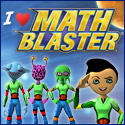~ in addition to Learning Styles, is a key to learning & life success!
When we removed Misha, our struggling 2nd grader from private school in August 2010, because he was struggling in school in spite of being a very clever child that could memorise books like a parrot & yet wasn’t able to read, he had already lost all his self-confidence & hated school. At that stage I had absolutely no knowledge about learning styles or even brain dominance.
Thanks to Tannie Hettie, our eldest’s Grade R teacher at Hettie HenPlaygroup, I discovered that his gross & fine motor skills hadn’t been addressed properly. I figured once the motorskills were addressed, his learning would improve. Although he did show huge progress with the motorskills improvement, he still had huge resistance to worksheets & workbooks, thus getting schoolwork done was still a daily struggle for us. It was only after about 8 months of homeschooling that I finally stumbled onto a website about learning styles & brain dominance.
WoW, what an eye opener that was. Finally I understood why my bright 7 year old was struggling so much with schoolwork. All the indications were there that he’s a right-brained child & hence the left-brained learning environment at school was just not working for him. He needed alternative instructions in order to retain what he was taught. In hindsight, Misha’s motor skills were only part of his problem, the other contributing factor was his learning environment. School just didn’t cater for his kinaesthetic & visual spatial learning styles & he just didn’t fit into the left-brain dominant teaching environment.
For more information on brain dominance, please check out the links below. I’ve spent the last 4 months incorporating these strategies into our school day & have since seen a huge improvement in all areas of learning. He is finally able to read & starting to slowly regain his confidence…
- How to tell why your child is struggling ~ The Right-Brained child struck in a Left-Brained curriculum.
-
Left Brain, Right Brain or Whole Brain? ~ An examination into the theory of brain lateralization, learning styles and the implications for education.
-
Hermann Brain Dominance Theory ~ Brain dominance information page.
-
Right Brain / Left Brain Inventory ~ An inventory of the different ways the right brain and left brain process information.
- Is Your Child Right-Brained Oriented? ~ The Homeschool Mom
-
Learning Styles ~ This web-site contains information on how Hemispheric Dominance (Left of Right Brain Dominance) influences learning styles.
Left Brain vs. Right Brain
| Left brain | Right brain |
| Analytical, led by logic | Intuitive, led by feelings |
| Logical | Emotional |
| Verbal, focusing on words, symbols, numbers | Visual, focusing on images, patterns |
| Work up to the whole step by step, focusing on details, information organized | See the whole (big picture) first, then the details |
| Highly Organized | Organization ends to be lacking (Random) |
| Orderly and predictable | Spontaneous and flexible |
| Like making lists and planning ahead | Free association (Impulsive) |
| Few gestures when speaking | Many gestures |
| Logical | Creative |
| Sequential | Skipping around |
| Specifics | Main idea |
| Work independently | Cooperation in groups |
| Observation | Touching and feeling actual objects (sensory input) |
| Names | Faces |
| Literal | Contextual |
| Words | Pictures |
| Symbolic | Concrete |
| Process ideas sequentially, step by step | Process ideas simultaneously |
| Words used to remember things, remember names rather than faces | 'Mind photos' used to remember things, writing things down or illustrating them helps you remember |
| Make logical deductions from information | Make lateral connections from information |
| Likely to follow rules without questioning them | Like to know why you're doing something or why rules exist (reasons) |
| Good at keeping track of time | No sense of time |
| Spelling and mathematical formula easily memorized | May have trouble with spelling and finding words to express yourself |
| Plan ahead | Trouble prioritizing, so often late, impulsive |
| Likely read an instruction manual before trying | Unlikely to read instruction manual before trying |
| Listen to what is being said | Listen to how something is being said |
| Likely to believe you're not creative, need to be willing to try and take risks to develop your potential | Likely to think you're naturally creative, but need to apply yourself to develop your potential |
- Does your child struggle to memorize facts?
- Is your child spontaneous, rarely planning ahead?
- Does your child like to discuss and talk while learning?
- Does your child struggle to “show all work”?
- Does your child prefer a relaxed, non-traditional school environment (such as lying on the floor)?
- Does your child figure things out without much evidence?
- Does your child struggle with self-discipline, and tend to act impulsively?
- Does your child skip problems when doing math?
- Does your child struggle with doing work in workbooks?
- Does your child like to do hands-on, interactive projects?
- Does your child enjoy mechanical, technical, or “put it together” types of pursuits?
- Does your child lose track of time easily, or often underestimate how much time he has?
- Does your child question rules regularly?
- Does your child learn complex concepts easily but struggle with easy skills?
- Is your child imaginative and creative?
- Does your child find answers without knowing how he got them?
- Is your child dramatic and demonstrative?
- Is your child sensitive to emotions and attitudes of others?
- Does your child have a good photographic memory?
- Does your child work well with noise, music, or activity in the background?
- Does your child develop unusual solutions to problems?
- Does your child prefer pictures, charts, and graphs to written words?
- Does your child enjoy fantasy-based and/or mystery books over biographies?
- Does your child have to “see” a word in his mind to be able to spell it?
- Does your child skip over directions and immediately “jump in” to assigned work?
- Is your child able to brainstorm many options to potential problems?
- Does your child have a good sense of rhythm or an aptitude for music?
- Does your child have a good sense of humour?
- Does your child like to move around while doing schoolwork?
- Does your child often want you to “get to the point”, and get bored with long descriptions or details?
- Does your child like to doodle while he works, or enjoy drawing or colouring?
- Does your child learn whole words easily, but struggle with phonics?
- Does your child have a good sense of direction, and is he able to read maps well?
- Does your child enjoy taking risks?
- Does your child tend to procrastinate, and wait until the last minute?
- Does your child seem to daydream often?
- Does your child enjoy listening to music while doing work?
- Does your child struggle to keep his desk and room organized?
- Does your child enjoy computer-oriented games or learning?
- Does your child learn better by demonstration than explanation?
Left Brain vs. Right-Brain Functions
| Left Brain Functions | Right Brain Functions |
| Uses logic | Uses feeling |
| Detail oriented | “Big pictures” oriented |
| Facts rule | Imaginations rules |
| Words and language | Symbols and images |
| Present and past | Present and future |
| Math and science | Philosophy and religion |
| Order/pattern perception | Spatial perception |
| Knows object name | Knows object function |
| Reality based | Fantasy based |
| Forms strategies | Presents possibilities |
| Practical | Impetuous |
| Safe | Risk taking |
Skills Associated with Hemispheric Specialization
| Left Hemisphere | Right Hemisphere |
| Handwriting | Haptic awareness |
| Symbols | Spatial relationships |
| Language | Shapes and patterns |
| Reading | Mathematical computation |
| Phonics | Colour sensitivity |
| Locating details and fact | Singing and music |
| Talking and reciting | Art expression |
| Following directions | Creativity |
| Listening | Visualization |
| Auditory Association | Feelings and emotions |
Modes of Consciousness
| Left Hemisphere | Right Hemisphere |
| Linear ~ Linear means part-to-whole. The left-brained person takes little pieces, lines them up, arranges them in logical order, and arrives at a convergent conclusion. | Holistic ~ The right-brained person thinks whole-to-part, holistically. The child with a dominant right hemisphere starts with the answer, a total concept, or perceives the whole pattern and discovers a divergent conclusion. |
| Symbolic ~ The right-brained person thinks whole-to-part, holistically. | Concrete ~ The child with a dominant right hemisphere starts with the answer, a total concept, or perceives the whole pattern and discovers a divergent conclusion. |
| Sequential ~ The left brain approaches life sequentially. | Random ~ The right brain floats randomly through life’s experiences. |
| Logical ~ The Logical person knows exactly where he gets his answers. He starts out with a little piece of information and logically works toward an end result. | Intuitive ~ Right-brained children are intuitive; they are not logical. They pull the answers right out of the air. They can give you the answer to a long-division problem but they may not be able to work through the sequential steps. |
| Reality-based ~ Left-hemispheric children can deal with reality, with the way thing are. Left-hemispheric children are very much affected by the environment and will adjust to it. If something is presented to them they will shift and react. If something is not there for left-hemispheric children, it doesn’t exist for them. | Fantasy-oriented ~ Right-hemispheric children will try to change the environment, to make it shift and react to meet their needs in any way they know how. They deal with fantasy, with imagery, with imagination. |
| Temporal ~ Left-hemispheric children have a sense of time. | Non-temporal ~ Right-hemispheric children have very little sense of time. They simply do not comprehend when you set time limits. They cannot think in any terms except the here and now. |

Brain Dominance Tests:
- Brain Dominance Test (Online Test)
- Hemispheric Dominance Inventory Test
- Lumosity
- Left-Brain / Right Brain Quiz for Teens
Right-Brain Teaching Tips:
- Improving Academic Success with Right-Brain Learning Methods by Lori Enomoto
- Right-Brained Math from The HomeSchool Mom
- More Right-Brained Math Ideas from The HomeSchool Mom
- Right-Brained Reading from the HomeSchool Mom
- Right-brained Reading Strategies from the HomeSchool Mom
- Right-brained Reading Strategies, Part 2 from the HomeSchool Mom

 Left Brain, Right Brain: Perspectives From Cognitive Neuroscience (Series of Books in Psychology) by Sally P. Springer
Left Brain, Right Brain: Perspectives From Cognitive Neuroscience (Series of Books in Psychology) by Sally P. Springer
 Right-Brained Children in a Left-Brained World: Unlocking the Potential of Your ADD Child by Jeffrey Freed
Right-Brained Children in a Left-Brained World: Unlocking the Potential of Your ADD Child by Jeffrey Freed
 The Right Side Of Learning: Effective Study Skills For Attention Deficit, Dyslexia, And Creative Right-Brained Thinking by Melanie West
The Right Side Of Learning: Effective Study Skills For Attention Deficit, Dyslexia, And Creative Right-Brained Thinking by Melanie West





























No comments:
Post a Comment